 W
WDavid Aubert was a French calligrapher who transcribed and adapted courtly romances and chronicles for the court of the Duke of Burgundy. In addition to finely presented works, illuminated at Bruges and other centres, for the Dukes Philip the Good and Charles the Bold and the Duchess Margaret of York, he completed manuscripts for Antoine de Bourgogne and Philippe de Croy.
 W
WJean Brito or Jan Brulelou was a Breton printer in the Burgundian Netherlands. He was born in Pipriac, a village approximately halfway between Rennes and Nantes. He moved to Tournai where he worked as a calligrapher. Then he moved to Bruges, where he became a printer in the course of the 1470s. In a short verse he refers to himself as a citizen of Bruges.
 W
WPaula Dei Mansi was a Jewish scribe and Torah scholar. She thought to be the earliest known female scribe. Dei Mansi was the daughter of Abraham Anau of Verona and belonged to a family of scribes that their roots to Rabbi Nathan ben Jehiel of Rome (1035-1110), author of a noted Jewish legal work. Evidence of Dei Mansi’s skill extends beyond that of scribe to that of a Torah scholar. Dei Mansi contributed to her father's biblical commentary, adding her own explanations in the commentary, in addition to translating the work from Hebrew into Italian. Dei Mansi also transcribed a Hebrew prayer book and added her own explanations as commentary to the prayers. A third work, a collection of laws, is known to have been transcribed by Dei Mansi who wrote the work at the request of a relative.
 W
WDunstan was an English bishop. He was successively Abbot of Glastonbury Abbey, Bishop of Worcester, Bishop of London and Archbishop of Canterbury, later canonised as a saint. His work restored monastic life in England and reformed the English Church. His 11th-century biographer Osbern, himself an artist and scribe, states that Dunstan was skilled in "making a picture and forming letters", as were other clergy of his age who reached senior rank. Dunstan served as an important minister of state to several English kings. He was the most popular saint in England for nearly two centuries, having gained fame for the many stories of his greatness, not least among which were those concerning his famed cunning in defeating the devil.
 W
WEadwig Basan was an eleventh-century monk and scribe of Christ Church Canterbury, who worked on several manuscripts, including the Eadwig Gospels and Eadwig Psalter, both of which were named after him, and the Grimbald Gospels. He also made additions to the York Gospels, the Harley Psalter and the famous Vespasian Psalter, as well as writing several charters in the second and third decades of the eleventh century. It seems that many of his works have a common artist, which has led to the suggestion that he illustrated his manuscripts personally, although this cannot be verified; possibly he is represented by the figure of an anonymous monk kneeling at the feet of St Benedict in a miniature from the Eadwig Gospels. However, it is more likely that this monk was copied from a manuscript by Rabanus Maurus.
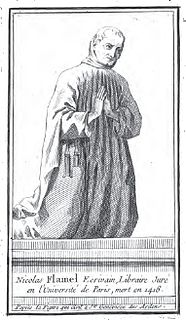 W
WNicolas Flamel was a French scribe and manuscript-seller. After his death, Flamel developed a reputation as an alchemist believed to have discovered the philosopher's stone and to have thereby achieved immortality. These legendary accounts first appeared in the 17th century.
 W
WGisela of Kerzenbroeck or Gisela von Kerssenbrock was a nun in the northern German city of Rulle who probably worked most of her life writing and illustrating manuscripts, as well as being choirmistress.
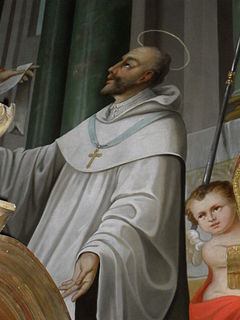 W
WStephen Harding was an English-born monk and abbot, who was one of the founders of the Cistercian Order. He is honoured as a saint in the Roman Catholic Church.
 W
WIacob Heraclid, born Basilicò and also known as Iacobus Heraclides, Heraclid Despotul, or Despot Vodă, was a Greek Maltese soldier, adventurer and intellectual, who reigned as Prince of Moldavia from November 1561 to November 1563. He is remembered as a pioneer of the Protestant faith in Eastern Europe, a champion of Renaissance humanism, and a founder of academic life in Moldavia. Active within the Greek diaspora in several countries, he was a student of Hermodorus Lestarchus, and worked as a scribe alongside his cousin, Iakobos Diassorinos. Heraclid forged his genealogy several times, claiming to be a member of the Branković dynasty; he was more reliably related to the Byzantine nobility in Rhodes, and claimed the titular lordship of Samos. In the late 1540s and early '50s, he studied medicine at the University of Montpellier, and married a local. A duelist and alleged infanticide, Heraclid fled over the border with the Holy Roman Empire before he could be executed for murder. He was slowly won over by the Reformation, serving the Protestant princes of the Upper Saxon Circle.
 W
WHermann of Schleswig, also known as Hermann of Klosterrath, was a titular bishop of Schleswig, canon and possibly also scribe at Lund Cathedral. He entered the monastery of Rolduc at an early age, and after failing to become abbot of the monastery eventually left for Lund. He provided several services to the bishops of Lund and was appointed to become bishop of Schleswig, but the local clergy had elected Occo of Schleswig in 1137 as their bishop and refused to accept Hermann. He therefore remained in Lund, where he is buried in the crypt of Lund Cathedral.
 W
WThomas Hoccleve or Occleve (1368–1426) was an English poet and clerk who has been seen as a key figure in 15th-century Middle English literature.
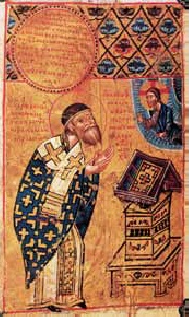 W
WJakov of Serres was a medieval Serbian writer, scholar, translator, and hierarch of the Serbian Orthodox Church, one of the most important men of letters working in the 14th century.
 W
WJohn of Wallingford was a Benedictine monk at the Abbey of St Albans, who served as the abbey's infirmarer at some time between c.1246-7 and his death in 1258. He is now mostly known through a manuscript containing a miscellaneous collection of material, mostly written up by Wallingford from various works by his contemporary at the abbey Matthew Paris, which survives as British Library Cotton MS Julius D VII. This manuscript includes the so-called Chronica Joannis Wallingford or Chronicle of John of Wallingford.
 W
WJohn Shirley was an author, translator, and scribe. As a scribe of later Middle English literature, he is particularly known for works by John Lydgate and Geoffrey Chaucer.
 W
WBartholomew of Krbava was a Croatian manuscript illuminator, calligrapher and scribe. Several richly illuminated codexes are authored by and ascribed to him and his scriptorium, most notably the Berlin missal (1402), Beram missal and Roč missal (1421).
 W
WHieromonk Makarije is the founder of Serbian and Romanian printing, having printed the first book in Serbian language and the first book in the territory of Walachia.
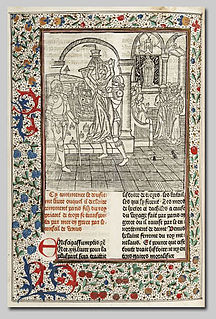 W
WColard Mansion was a 15th-century Flemish scribe and printer who worked together with William Caxton. He is known as the first printer of a book with copper engravings, and as the printer of the first books in English and French.
 W
WJohannes Mentelin, sometimes also spelled Mentlin, was a pioneering German book printer and bookseller active during the period during which incunabula were printed. In 1466, he published the first printed Bible in the German language, the Mentelin Bible].
 W
WJean Miélot, also Jehan, was an author, translator, manuscript illuminator, scribe and priest, who served as secretary to Philip the Good, Duke of Burgundy from 1449 to Philip's death in 1467, and then to his son Charles the Bold. He also served as chaplain to Louis of Luxembourg, Count of St. Pol from 1468, after Philip's death. He was mainly employed in the production of de luxe illuminated manuscripts for Philip's library. He translated many works, both religious and secular, from Latin or Italian into French, as well as writing or compiling books himself, and composing verse. Between his own writings and his translations he produced some twenty-two works whilst working for Philip, which were widely disseminated, many being given printed editions in the years after his death, and influenced the development of French prose style.
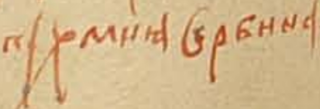 W
WPachomius the Serb, also known as Pachomius Logothetes, Russian: Пахомий Логофет, Greek: Παχώμιος Λογοθέτης) was a 15th-century Serbian hagiographer who, after taking monastic vows, was schooled on Mount Athos and mastered the ornate style of medieval Serbian literature.
 W
WMatthew Paris, known as Matthew of Paris, was a Benedictine monk, English chronicler, artist in illuminated manuscripts and cartographer, based at St Albans Abbey in Hertfordshire. He wrote a number of works, mostly historical, which he scribed and illuminated himself, typically in drawings partly coloured with watercolour washes, sometimes called "tinted drawings". Some were written in Latin, some in Anglo-Norman or French verse.
 W
WNicolas Spierinc was a Flemish illuminator and scribe active in late 1400s. Works attributed to him include the lettering of the Hours of Mary of Burgundy. He was a student of medicine at the University at Louvain, later changing his profession to a scribe and illuminator, moving to Ghent, where he found success and wealth. He is known to have collaborated with both Lieven van Lathem and the Master of Mary of Burgundy on prayer books of hours.
 W
WStanislav of Lesnovo or Stanislav Gramatik, was a Serbian writer, a scribe in the monastery of Lesnovo.
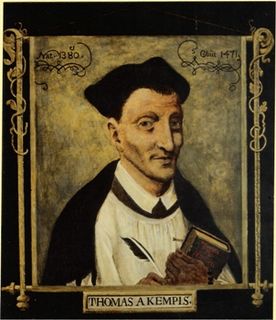 W
WThomas à Kempis was a German-Dutch canon regular of the late medieval period and the author of The Imitation of Christ, one of the most popular and best known Christian devotional books. His name means "Thomas of Kempen", Kempen being his home town.
 W
WThe Tremulous Hand of Worcester is the name given to a 13th-century scribe of Old English manuscripts with handwriting characterized by large, shaky, leftward leaning figures usually written in light brown ink. He is assumed to have worked in Worcester Priory, because all manuscripts identified as his work have been connected to Worcester.
 W
WÁed Ua Crimthainn, also called Áed mac Crimthainn, was abbot and coarb of Terryglass, near Lough Derg in County Tipperary, Ireland. He was the principal scribe of the Book of Leinster, the Book of Oughaval, an important Middle Irish medieval illuminated manuscript, and is also believed to have been its sole compiler.